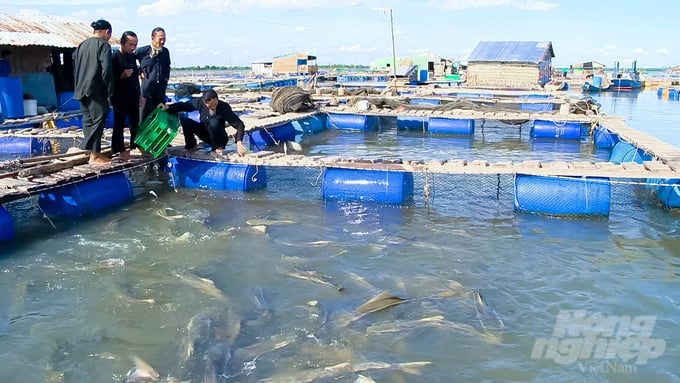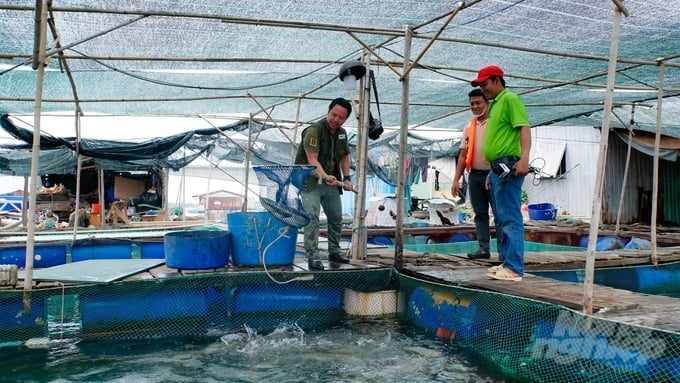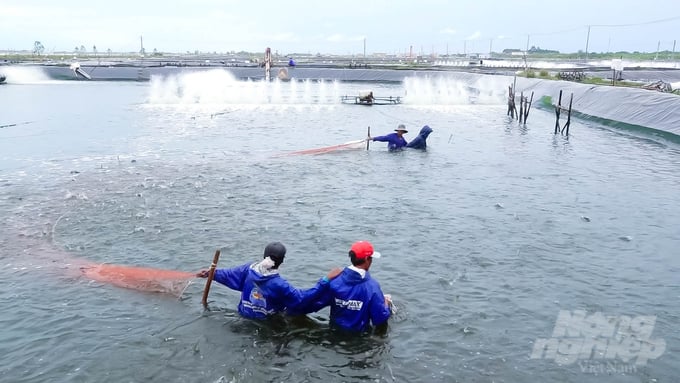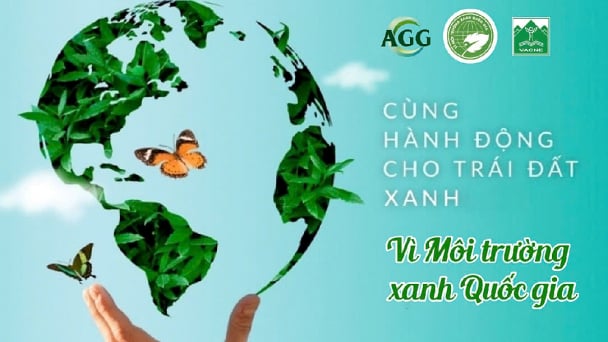May 18, 2025 | 04:37 GMT +7
May 18, 2025 | 04:37 GMT +7
Hotline: 0913.378.918
May 18, 2025 | 04:37 GMT +7
Hotline: 0913.378.918
Mr. Nguyen Cong Vinh, Vice Chairman of Ba Ria - Vung Tau People's Committee, said that developing high-tech agriculture and mariculture is one of the four economic pillars of the province.
"The provincial People's Committee has promptly issued the Action Plan for Fisheries Development in Ba Ria - Vung Tau to 2030. The goal is to develop the fisheries industry into an important economic sector, producing large commodities associated with industrialization - modernization, sustainable development and proactive adaptation to climate change. In the near future, the provincial People's Committee will assign Ba Ria - Vung Tau Department of Agriculture and Rural Development to take on the main role of studying mariculture-focused models, thereby reducing exploitation, meeting the set targets on domestic consumption and export of fishery products,” said Mr. Vinh.

Cage mariculture on the sea, coast and islands is one of the key contents that Ba Ria - Vung Tau wants to promote in the current period. Photo: Minh Sang.
Going into detail, Ba Ria - Vung Tau People's Committee implements the fishing structure in the contiguous zone and coastal area, associated with mariculture and eco-tourism to bring into full play the potential and advantages of sustainable development for the fishery industry. In particular, the province focuses on converting fishing occupations that are invasive to aquatic resources.
According to statistics of the provincial Sub-Department of Fisheries, as of October 2022, the farming area of Ba Ria - Vung Tau is more than 5,900 ha, of which the freshwater farming area is more than 1,800 ha, accounting for 31%; saltwater farming, brackish water nearly 4,100 ha, accounting for 68%; extensive farming 576 ha, accounting for 10%; improved extensive farming nearly 4,900 ha, accounting for 82%; semi-intensive farming 125 ha, accounting for 2%, intensive farming 326 ha, accounting for 5.5%.
Ba Ria - Vung Tau strives to reach a total mariculture output of 20,000 tons/year by 2025. The provincial People's Committee also encourages the development of recreational mariculture, fine arts and jewelry in the direction of producing goods in service of tourism and export.

Ba Ria - Vung Tau is applying many technologies in mariculture, which result in high productivity and meeting the demand of domestic and export markets. Photo: Le Binh.
Ba Ria - Vung Tau has 7 enterprises, 2 cooperatives operating in the field of fishing, 334 groups of solidarity fishing at sea. The average catch is 300,000 tons/year. The potential area for mariculture is approximately 16,100 ha. The average commercial production is estimated at 20,500 tons/year. With more than 50 enterprises exporting seafood up to standards, eligible for markets like the EU, the USA, Japan, Korea. The annual turnover is approximately USD 342 million.
In order to achieve the set goals of marine farming and export value, Ba Ria - Vung Tau Department of Agriculture and Rural Development stated that the province aims to focus on creating link chains in mariculture. The province's agricultural sector will develop the link chain’s value according to the "tripod" criteria: production, product consumption and food safety.
“There are currently 21 organizations and individuals in Ba Ria - Vung Tau engaged in aquaculture and seed production. In particular, there are 19 high-tech vannamei shrimp farming establishments. These establishments apply high technology with a total area of about 419 ha. It would pose certain difficulties if we don't create a linkage between businesses," said Ms. Pham Thi Na, Deputy Director of Ba Ria - Vung Tau Department of Agriculture and Rural Development.

The high-tech shrimp farming industry of Ba Ria - Vung Tau is in line with the province’s mariculture development orientation. Photo: Le Binh.
Assessing the potential for mariculture development in Ba Ria - Vung Tau, Mr. Tran Cong Khoi (Directorate of Fisheries) said that the local fisheries industry possesses many advantages and has the potential to become the highlight of the region. “This is a province strong in tourism, located in the center of the Southeast, so it is easy for consumption. However, the production link chain is still an important factor to consider”.
“Ba Ria - Vung Tau needs to promote close linkage from the factors of farming - exploitation, processing - preservation, transportation - circulation, consumption - distribution to supply chain management. Only by doing so can the province increase productivity, reduce costs, improve the quality and value of Vietnamese seafood. The province can even consider developing a chain of links from fishing, farming to processing. Businesses tend to link together because each business, each region has its own different strength," Mr. Khoi said.
Lien Giang Farm (An Thanh hamlet, An Ngai commune, Long Dien district) is one of the point models of Ba Ria - Vung Tau on the application of high technology in shrimp farming. Lien Giang Farm currently has 15 high-tech shrimp ponds with an output of 200 tons/year. This model is highly evaluated by the local seafood industry as it brings economic efficiency beyond expectations.
Thanks to the strict farming procedure, the output is high and the model fetches good prices (200,000 - 220,000 VND/kg, size 30 shrimps per kg). After deducting costs (90,000 - 100,000 VND/kg), Lien Giang Farm's profit is approximately VND 20 billion/year. High-tech shrimp farming helps increase production four times compared to traditional shrimp farming, not to mention this model contributes to the province’s environment protection by effectively controlling the criteria of seed, feed, and water source.
Translated by Samuel Pham

(VAN) 14 out of 35 domesticated elephants in Dak Lak province have had their living conditions improved, with 11 of them currently participating in the non-riding elephant tourism model.

(VAN) Muong Nhe Nature Reserve hopes that being upgraded to a national park will lay the foundation for forest protection efforts to be carried out in a systematic, modern, and sustainable manner.
/2025/05/16/3923-2-171845_52.jpg)
(VAN) Lower costs, higher yields, and improved soil quality are outstanding benefits that soybeans bring when integrated into the crop rotation system.

(VAN) The 'For a Green National Environment' programme aims to promote a green lifestyle, support businesses in implementing ESG practices, and turn Net Zero commitments into concrete actions.

(VAN) Cold-barn systems efficiently manage environmental and temperature conditions, which aids in the prevention of respiratory diseases in pigs and protects them from the vectors that transmit African swine fevers.

(VAN) To tackle challenges, the project 'Addressing key technical bottlenecks in the grouper supply chain in Vietnam' has been underway since 2024.

(VAN) The project 'Disease-Resilient and Sustainable Cassava Production Systems in the Mekong Region', funded by the Australian Center for International Agricultural Research (ACIAR), is being implemented from 2024 to 2028.